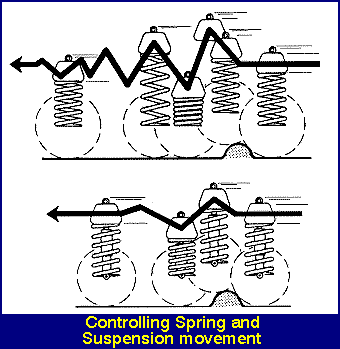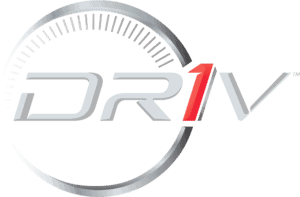MAIN COMPONENTS
At this point it’s easy to understand that the main components of a moving vehicle’s suspension system are the struts, shock absorbers, springs, and tyres. Struts are a major structural member, while shock absorbers are a major component. The struts and shock absorbers control, or damp, excessive spring and suspension movement.
The springs support the weight of the vehicle, maintain ride height, and absorb road shock. Springs are the flexible link that allows the frame and body to ride relatively undisturbed while the tyres and suspension follow the bumps in the road.
Springs are the compressible link between the frame and the body. When additional load is placed on the springs, or the vehicle meets a bump in the road, the springs will absorb the load by compressing. The springs are a very important component of the suspension system that provides ride comfort. Shocks and struts help control how fast the suspension is allowed to move which is important in keeping the tyres in firm contact with the road.

During the study of springs, the term bounce refers to the vertical (up and down) movement of the suspension system. The upward suspension travel that compresses the spring and shock absorber is called jounce, or compression. The downward travel of the tyre and wheel that extends the spring and shock absorber is called rebound, or extension.
When a spring is deflected, it absorbs energy. Without shocks or struts, the spring will extend and release this energy at an uncontrolled rate. The spring’s inertia causes it to bounce and over-extend itself. Then it re-compresses, but will again travel too far. The spring continues to bounce at its natural frequency until all the energy originally put into the spring is used up by friction.
If the struts or shock absorbers are worn and the vehicle meets a bump in the road, the vehicle will bounce at a frequency of the suspension until the energy of the bump is used up. This may allow the tyres to lose contact with the road.
Struts and shock absorbers that are in good condition will allow the suspension to oscillate only through one or two diminishing cycles, limiting or damping excessive vibration.
By controlling spring and suspension movement, components such as ball joints and tie rods will operate within their design range and, while the vehicle is in motion, dynamic alignment will be maintained.


